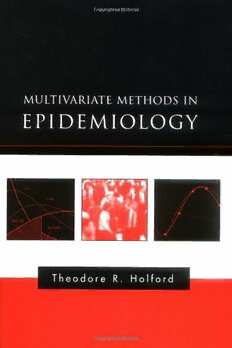
Multivariate Methods in Epidemiology PDF
427 Pages·2002·16.659 MB·English
Most books are stored in the elastic cloud where traffic is expensive. For this reason, we have a limit on daily download.
Preview Multivariate Methods in Epidemiology
Description:
The basis for much of medical public health practice comes from epidemiological research. This text describes current statistical tools that are used to analyze the association between possible risk factors and the actual risk of disease. Beginning with a broad conceptual framework on the disease process, it describes commonly used techniques for analyzing proportions and disease rates. These are then extended to model fitting, and the common threads of logic that bind the two analytic strategies together are revealed. Each chapter provides a descriptive rationale for the method, a worked example using data from a published study, and an exercise that allows the reader to practice the technique. Each chapter also includes an appendix that provides further details on the theoretical underpinnings of the method. Among the topics covered are Mantel-Haenszel methods, rates, survival analysis, logistic regression, and generalized linear models. Methods for incorporating aspects of study design, such as matching, into the analysis are discussed, and guidance is given for determining the power or the sample size requirements of a study. This text will give readers a foundation in applied statistics and the concepts of model fitting to develop skills in the analysis of epidemiological data.
See more
The list of books you might like
Most books are stored in the elastic cloud where traffic is expensive. For this reason, we have a limit on daily download.
